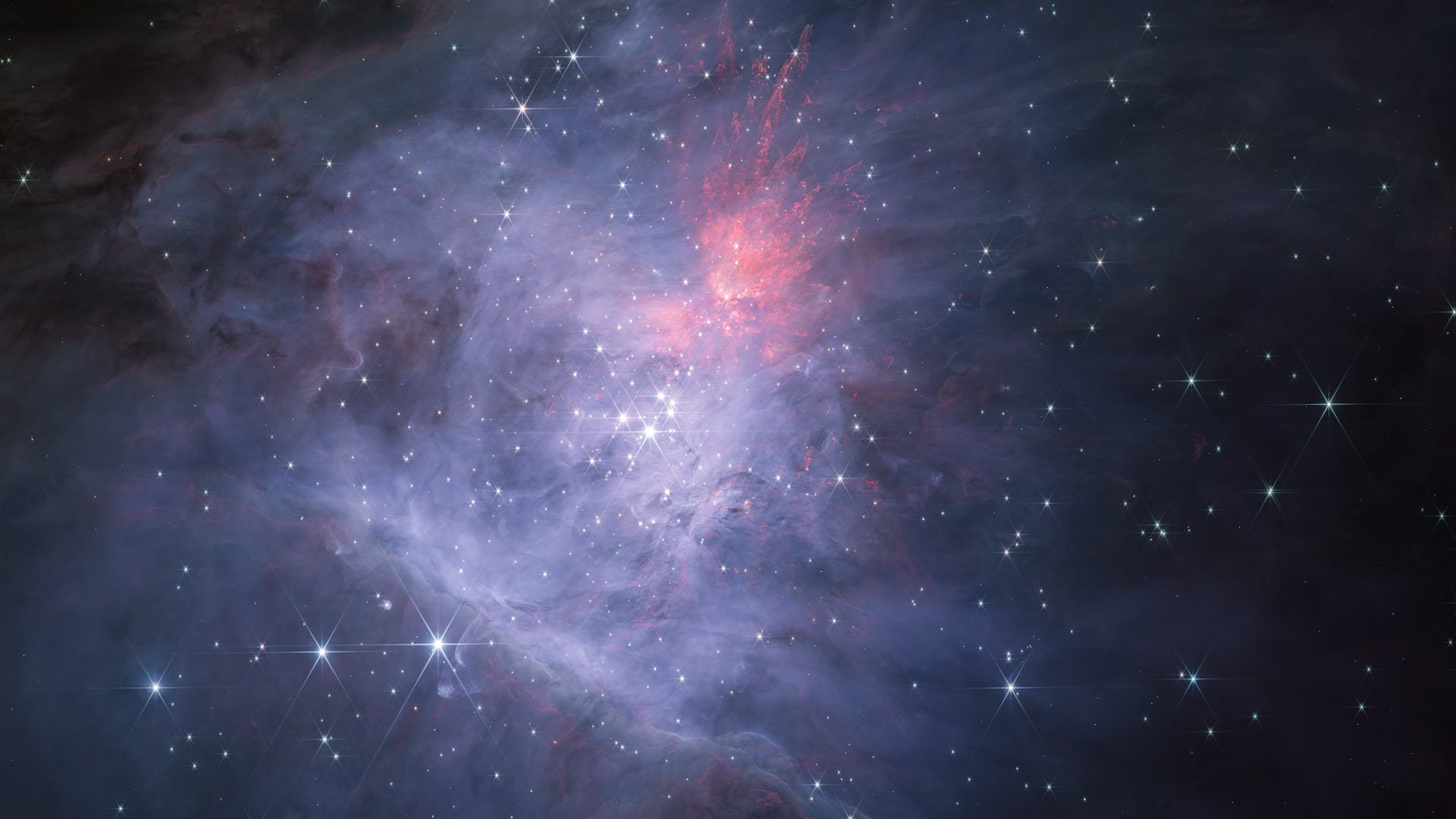Physics-breaking 'rogue' objects spotted by James Webb telescope are emitting radio signals that scientists can't explain

In 2023, the James Webb Space Telescope (JWST) helped identify hundreds of free-floating "rogue" planets that don't orbit a parent star. Now, astronomers have found that a pair of these planets may be producing enigmatic, hard-to-interpret radio signals.
The rogue planets spotted by JWST lie in the Orion Nebula, a long-time observational hotspot for astronomers. In total, they number over 500. This discovery bonanza was possible thanks to JWST's ability to pick up infrared radiation emitted by these relatively young planets.
Bizarrely, though, about 80 of these planets exist as pairs. Similar in mass to Jupiter, the planets orbit each other at distances ranging from 25 to 400 times the distance between Earth and the sun. These tangoing duos, called Jupiter-mass binary objects (JuMBOs), pose a huge mystery for astronomers, because the existence of these worlds challenges current theories of planet formation. Some scientists think these objects may not even be planets but rather previously unknown entities that are larger than planets but smaller than brown dwarfs, which are sometimes called "failed stars" because they blur the line between planets and stars.
The JWST data showed that JuMBOs generated infrared radiation, but the new study's authors wanted to see if these dancing objects produced radio waves. That's because different classes of cosmic objects produce distinct patterns of radio emissions. For instance, planets like Jupiter spew several types of radio signals, including gigahertz-frequency emissions thousands of times higher-pitched than an FM signal, partly because of their magnetic fields.
Related: After 2 years in space, the James Webb telescope has broken cosmology. Can it be fixed?
Spotting such signatures from the JuMBOs could help resolve their identity. The observations could also explain "why some objects have detectable radio emission and others do not," lead study author Luis Rodríguez, a professor emeritus at the Institute of Radio Astronomy and Astrophysics at the National Autonomous University of Mexico, told Live Science in an email.
To find radio wave "snapshots" of the Orion Nebula where the JuMBOs reside, the scientists combed through archives of observations maintained by the U.S. National Radio Astronomy Observatory (NRAO). They found just one pair that apparently emits radio waves: JuMBO 24. Itself an oddity among the oddball objects, it's the heaviest of the JuMBOs, and also the one with the tightest space between its component planets.
Sign up for the Live Science daily newsletter now
Get the world’s most fascinating discoveries delivered straight to your inbox.
A decade's worth of data the research team collated showed that the radio waves remained steady but strong, with a power of roughly a quarter of a ton of TNT and frequencies of 6 to 10 gigahertz. The radio waves also weren't circularly polarized, meaning they lacked spiral, twisting electric fields, the team reported in their study, published Jan. 8 in The Astrophysical Journal Letters.
But these features aren't what astronomers expect of signals created by planets."Circular polarization is an unambiguous indicator of the presence of magnetic fields," Rodríguez said. Without this, the team can't say definitively that the signals come from JuMBO 24 (assuming the planets have magnetic fields). Besides, radio emissions from other exoplanets are more variable and less intense.
Even if JuMBO 24 isn't a pair of planets but rather another type of cosmic duo, the signals are unusual. Signals from brown dwarfs are very different from the newly identified radio beams. The beams' brightness and frequency even ruled out the possibility of pulsars, the rapidly spinning cores of dead stars that produce pulses of radio waves at regular intervals.
The researchers also estimated the likelihood that the signals originate from an object behind JuMBO 24 and found it to be exceedingly slim, at just 1 in 10,000. And, in case you were wondering, the signals probably don't originate from aliens. "The fact that both components emit at similar levels favors a natural mechanism," Rodríguez said.
With the research at an impasse, the team is applying to the NRAO's Very Large Array in New Mexico to collect data from free-floating planets. Until then, the radio signals will remain a mystery.

Abha Jain is a freelance science writer. She did a masters degree in biology, specializing in neuroscience, from the Indian Institute of Science, Bengaluru, India, and is almost through with a bachelor's degree in archaeology from the University of Leicester, UK. She's also a self-taught space enthusiast, and so loves writing about topics in astronomy, archaeology and neuroscience.










